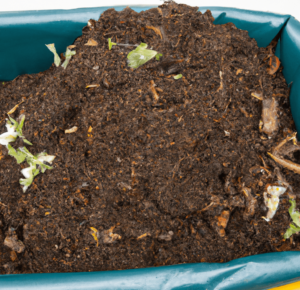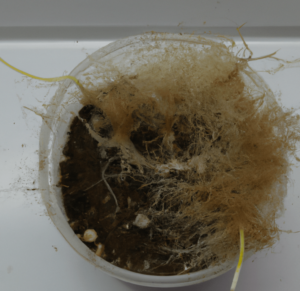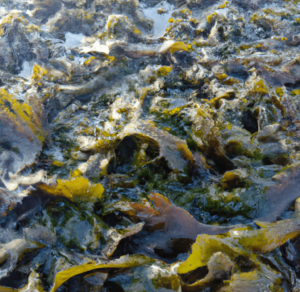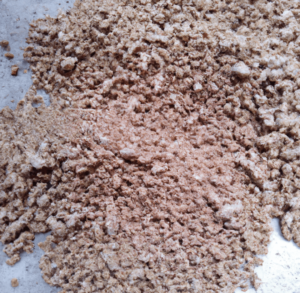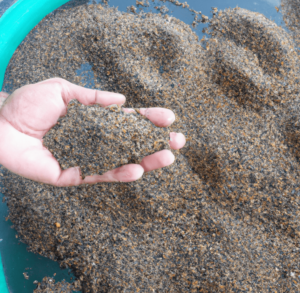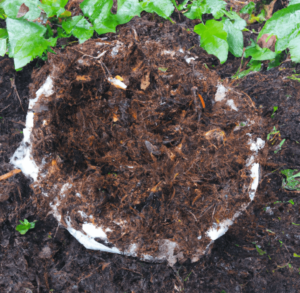In addition to being crucial to our ecology, plants also improve the environment’s general well-being and aesthetic appeal. They’re essential to the existence of many species and give us food, oxygen, and clean air. As gardeners and plant lovers, it’s important to make sure that our plants get the nutrients they need to grow and thrive. Liquid fertilizers can help with that. Fertilizers are necessary for the healthy growth of plants. They give plants the nutrients they need, like potassium, nitrogen, and phosphorus, to support growth and vigor. Particularly, liquid fertilizers have a number of advantages over conventional granular fertilizers. Here’s our guide to understanding and using liquid fertilizers in your garden.
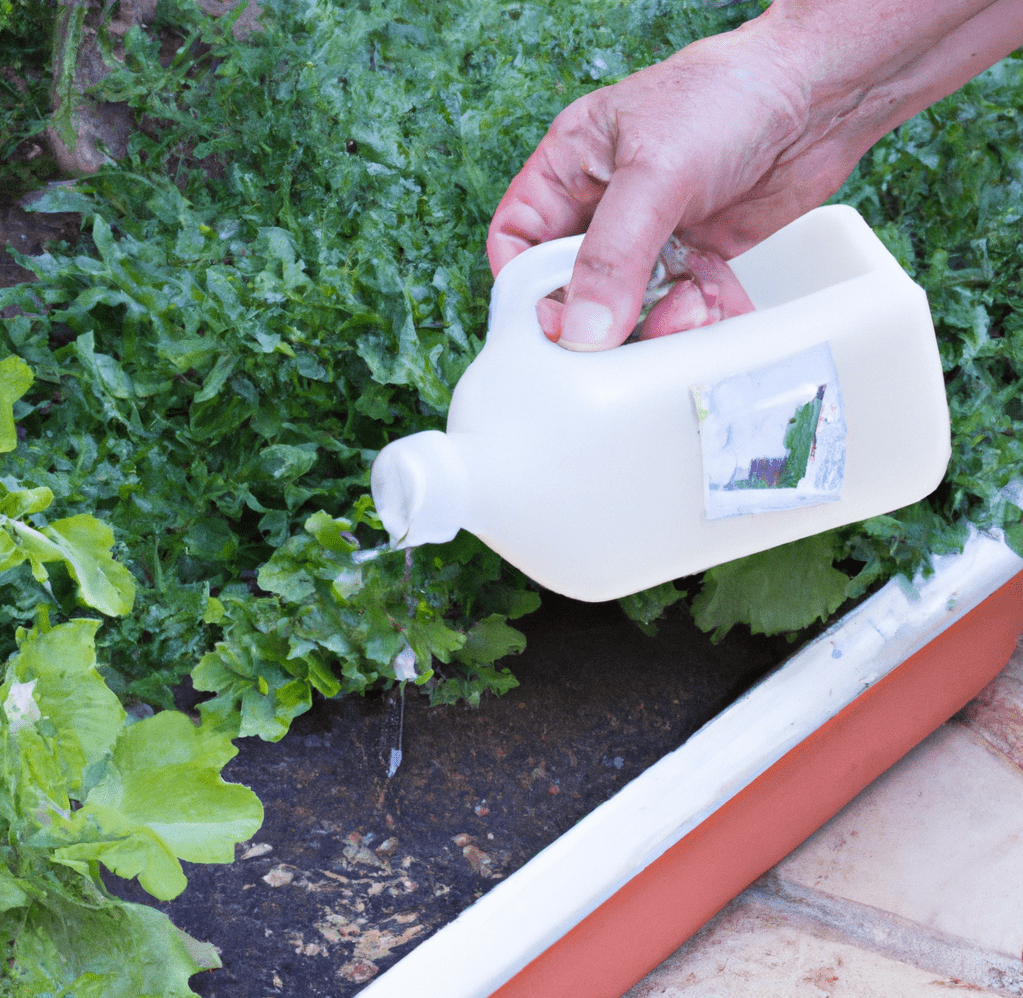
Types of Liquid Fertilizers
As you’re understanding using liquid fertilizers in your garden, they’re usually divided into three categories: homemade liquid fertilizers, synthetic liquid fertilizers, and organic liquid fertilizers:
- Chemicals manufactured from synthetic materials are utilized to create synthetic liquid fertilizers, which are frequently used to deliver speedy effects. They are frequently preferred by farmers and gardeners who are looking for a practical and effective way to give their plants and crops vital nutrients.
- Organic liquid fertilizers are created using organic substances like fish emulsion, compost, and seaweed extract. People who want to fertilize their plants in a way that is more sustainable and natural will use organic fertilizers for their many benefits. Although they often take longer to work than synthetic fertilizers, they can nonetheless help soil and plants in the long run.
- Eggshells and coffee grounds are two common household ingredients that can be used to make homemade liquid fertilizers. Those seeking an affordable and ecologically friendly substitute for commercial fertilizers prefer these fertilizers. They might not have the same immediate effects as synthetic fertilizers, but they can still be a good approach to providing plants with the nutrients they need.
Benefits of Liquid Fertilizers
Understanding and using liquid fertilizers in your garden means learning about their benefits:
- Liquid fertilizers are swiftly absorbed by the soil and subsequently taken up by plants, giving them the nutrients they need to grow. Gardeners may now observe the outcomes of their fertilizing efforts much more quickly than they could with conventional granular fertilizers.
- Liquid fertilizers are simple to measure and apply, which makes them perfect for tiny gardens or difficult-to-reach places. Without the use of spreaders or other tools, they can be applied precisely and uniformly by pouring them directly into a watering can or spray bottle.
- Over-fertilization, which may be detrimental to plants and the environment, is less likely to occur with liquid fertilizers. This is due to the fact that they are frequently utilized in lesser amounts and are quickly absorbed by the soil and plants.
- Liquid fertilizers can be sprayed over plant foliage or applied straight to the soil to provide plants with the nutrients they need to grow. They are therefore perfect for use on a wide range of plants, including lawns, flowers, and vegetables.
How to Choose the Right Liquid Fertilizer
The appropriate fertilizer is essential to the success of healthy plant growth. However, it might be challenging to choose the best fertilizer for your plants given the wide variety of fertilizers on the market. As you’re understanding and using liquid fertilizers in your garden, think about the following:
- Take into account the nutritional requirements of your plants. It’s crucial to choose a fertilizer with the proper ratio of plant nutrients because different plants have varied nutritional needs. For instance, in order to induce blooming, floral plants may need more phosphorus, but leafy greens may need more nitrogen to promote luxuriant growth.
- You can use soil testing to assess the nutrient content of your soil and spot any nutritional deficits that need to be filled in with fertilizer. You can choose a fertilizer that supplies the particular nutrients that your soil is deficient in based on the findings.
- In order to avoid overfertilizing and harming your plants, it’s crucial to carefully follow the manufacturer’s directions while using liquid fertilizers because they are often more concentrated than other kinds of fertilizers. For example, there are benefits to using slow-release fertilizers in your garden but you’ll need to be more patient.
- Select a fertilizer that is balanced: Three of the most important plant nutrients-nitrogen (N), phosphorus (P), and potassium-are included in a balanced fertilizer (K). The essential nutrients for plant growth and health are these three substances.
Understanding the NPK Ratio
When selecting fertilizer solutions for their garden and lawn, it’s crucial for any gardener to comprehend the NPK ratio. NPK stands for nitrogen, phosphorus, and potassium, the three main macronutrients required for plant growth. The percentage of these macronutrients in a fertilizer product is known as the NPK ratio. On fertilizer packaging, the NPK ratio is sometimes written as a string of three figures, such as 10-5-5 or 20-10-10.
As you’re understanding and using liquid fertilizers in your garden, an NPK fertilizer, for instance, has a composition of 10% nitrogen, 5% phosphorus, and 5% potassium. The NPK ratio can be used by gardeners to choose the appropriate fertilizer for their plants.
It’s critical to select a fertilizer with the appropriate NPK ratio for the particular plant species you are cultivating because various plants have varied nutritional requirements. For instance, a fertilizer with a higher nitrogen ratio, such as 30-5-5, could be more suitable for a lawn than a flower garden as lawns typically require more nitrogen than flowers do.
Choosing the Right Fertilizer for Your Plants
When you’re understanding and using liquid fertilizers in your garden, here’s how to make sure you choose the right one:
- Nutrients: The best fertilizer to use for your particular plants should include the correct balance of nutrients because different plants have varied nutritional needs. For instance, in order to induce blooming, floral plants may need more phosphorus, but leafy greens may need more nitrogen to promote luxuriant growth.
- Think about the fertilizer type: Fertilizers come in a variety of forms, including solid, liquid, and slow-release. Since liquid fertilizers can be swiftly absorbed by a plant’s roots, they are a practical and efficient choice. Solid fertilizers, however, can offer a longer-lasting release of nutrients over time.
- Seek out high-quality products: Pick dependable producers and high-quality fertilizers when making your selection. By doing this, you can assist ensure that the fertilizer is devoid of pollutants that could hurt your plants and has the proper balance of nutrients.
- Consult the label: The nutrients it contains, the suggested application rate and any additional instructions are all listed on the label of a fertilizer product. To prevent overfertilizing and harming your plants, carefully read the label and adhere to the manufacturer’s directions.
Reading and Understanding Fertilizer Labels
Understanding and using liquid fertilizers in your garden means understanding product labels first:
- NPK Ratio: As was covered in the section before, selecting a fertilizer requires careful thought of the NPK ratio. Make careful to check the label for the NPK ratio and select a product that has the ideal ratio of nutrients for your plants.
- Active Components: Fertilizer labels may also list other active ingredients, such as micronutrients and secondary nutrients, in addition to the NPK ratio. It’s critical to understand the components of your fertilizer because they may affect the well-being and development of your plants.
- Amount and Frequency: Fertilizer labels should also provide application directions, including the suggested amount and frequency of use. It’s crucial to adhere to these guidelines to prevent overfertilizing, which can be bad for the environment and your plants.
- Seasons: Some fertilizers are created specifically for the spring or fall. To get the best results while using a seasonal fertilizer, be sure to pick the appropriate ingredient for the present season.
Application Techniques
In order to maintain a healthy lawn, products must be applied correctly after you’ve learned about understanding and using liquid fertilizers in your garden. To get the finest outcomes for your lawn, as a gardener, it’s critical to comprehend the many methods for applying soil treatments and fertilizers.
One typical method is top dressing, which involves evenly applying a thin layer of dirt to the grass to boost its health. Aeration is a different method that includes taking out tiny plugs of soil to let water and nutrients seep deeper into the earth.
Whatever method is employed, it’s critical to adhere to product instructions and take into account variables like the type of grass, the weather, and the general condition of the soil. You can contribute to keeping your grass lush and healthy by taking the proper steps.
Foliar Application
Liquid fertilizers can also be administered directly to plant foliage, a practice known as a foliar application, in addition to soil. This approach may be particularly successful during certain seasons of the year or when the plant is under stress. Understanding and using liquid fertilizers in your garden, here’s what you need to know about the foliar application:
- When fertilizer is applied to the leaves, it can be promptly and directly absorbed by the plant, giving it a boost of nutrients right away. This can be especially helpful in stressful situations, like during a drought or the height of the summer.
- Foliar application can be used as a supplement to soil treatment, giving plants an extra burst of nutrients when they’re most needed. Plants may develop more robustly and strongly as a result of this.
- Foliar application is a convenient form of fertilizer since it may be carried out without causing soil disturbance. This makes it an excellent option for gardens with delicate or sensitive plants, as well as landscapes where access to soil is restricted.
It’s crucial to remember that not all plants can tolerate foliar treatment, and some may even suffer harm. It’s a good idea to research the particular requirements of your plants before employing this strategy and to abide by the fertilizer’s label directions.
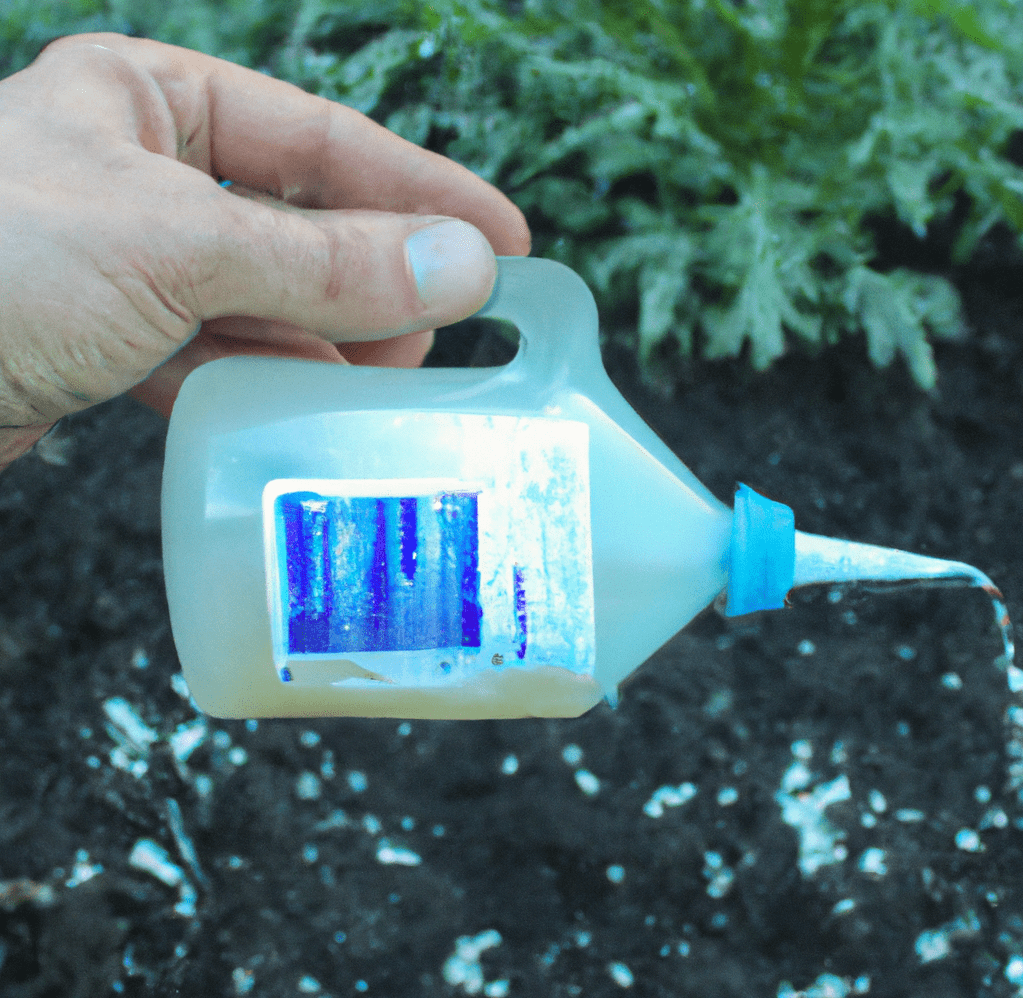
Soil Drenching
Gardeners utilize the method of “soil drenching” to apply fertilizer directly to plant roots. This technique is drizzling a liquid fertilizer solution directly over the soil around the plant’s base and letting it soak into the root zone. As it avoids the leaves and travels straight to the roots, this can be a useful method for giving the plants food quickly.
The fertilizer solution must be well mixed in accordance with the manufacturer’s recommendations before being applied uniformly around the base of the plants in order to carry out a soil drench. Additionally, it’s crucial to be cautious not to overwater because this can wash away the fertilizer before the roots have a chance to absorb it.
Soil drenching is a useful approach for gardeners who want to nourish their plants in a focused and effective way. It can assist the plants’ general health and vitality by giving nutrients directly to the roots.
Fertilization
Understanding and using liquid fertilizers in your garden? Here’s what you need to know about fertilization:
- Effective Nutrient Delivery: The plant can absorb nutrients more effectively and efficiently when fertilizer is applied straight to the roots. This may result in healthier and more robust plant development.
- Reduced Risk of Runoff: Runoff, which can be a concern when utilizing conventional soil application methods, is less likely to occur when fertilizer is provided directly to the roots. As a result, less fertilizer will be wasted on the environment and more will be absorbed by the plants.
- Composting: Composting and fertilization can work together, enabling the gardener to add compost tea or other organic fertilizers to the irrigation system. This offers a quick and convenient method of giving plants organic nutrients.
- Cost-effective: As the gardener may give fertilizer straight to the roots with little waste, fertilizing can be a cost-effective way of fertilization.
Bottom Line: Understanding and Using Liquid Fertilizers in Your Garden
You should read about understanding and using liquid fertilizers in your garden. These solutions may quickly and effectively supply vital nutrients to your soil and plants, whether you select to utilize an organic fertilizer or a synthetic alternative.
It’s critical to use liquid fertilizers according to the manufacturer’s directions, keep in mind the type of plants and soil you’re working with, and avoid over-applying. In terms of recommendations and further study, it’s critical for gardeners to keep learning about the many fertilizer options and application methods in order to choose the one that best suits their individual requirements. It’s critical to keep up with the most recent advancements in the industry as new goods and application techniques become available.
Understanding and Using Liquid Fertilizers in Your Garden FAQs
Why are liquid fertilizers essential for plants and what do they do?
A type of fertilizer called liquid fertilizers is used to give plants the nutrients they require for strong, healthy growth. Liquid fertilizers supply the basic elements that plants need for growth and vitality, including potassium, nitrogen, and phosphorus.
What varieties of liquid fertilizers are there?
Homemade liquid fertilizers, synthetic liquid fertilizers, and organic liquid fertilizers are the three main categories of liquid fertilizers. Eggshells and coffee grounds are common household components that can be used to make homemade liquid fertilizers, whereas fish emulsion, compost, and seaweed extract are used to make organic liquid fertilizers. Synthetic liquid fertilizers are created chemically from synthetic elements.
What advantages can liquid fertilizers offer?
In comparison to traditional granular fertilizers, liquid fertilizers have a number of benefits, including as quick soil and plant uptake, simple measurement and administration, a lower risk of over-fertilization, and versatility for use on a variety of plants.
What liquid fertilizer should I pick for my plants?
To avoid overfertilizing your plants, carefully observe the manufacturer’s instructions, take into account the nutritional needs of your plants, determine the NPK ratio of your liquid fertilizer, and analyze the nutrient content of your soil through soil testing.
Which NPK ratio does liquid fertilizer have?
The three primary macronutrients necessary for plant growth are nitrogen, phosphorus, and potassium, or NPK. The proportion of these macronutrients in a fertilizer product is indicated by the NPK ratio. Because different plant species have varied nutritional needs, it’s critical to select a fertilizer with the right NPK ratio for the specific plant species you are cultivating.


